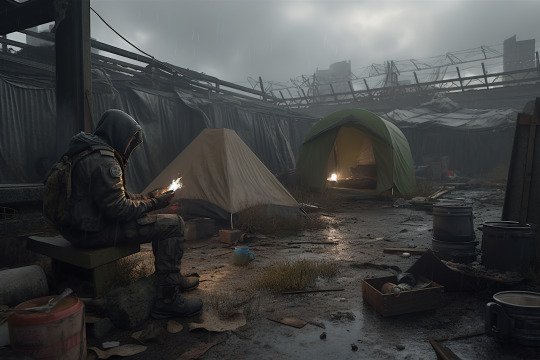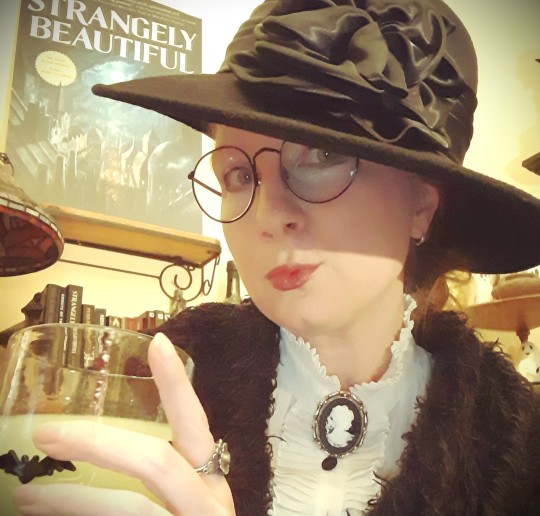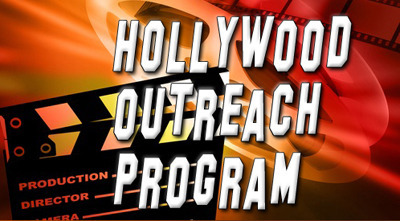#WritingProcess
Explore tagged Tumblr posts
Text
Things Real People Do in Dialogue (For Your Next Story)
Okay, let’s be real—dialogue can make or break a scene. You want your characters to sound natural, like actual humans talking, not robots reading a script. So, how do you write dialogue that feels real without it turning into a mess of awkward pauses and “ums”? Here’s a little cheat sheet of what real people actually do when they talk (and you can totally steal these for your next story):
1. People Interrupt Each Other All the Time In real conversations, nobody waits for the perfect moment to speak. We interrupt, cut each other off, and finish each other's sentences. Throw in some overlaps or interruptions in your dialogue to make it feel more dynamic and less like a rehearsed play.
2. They Don’t Always Say What They Mean Real people are masters of dodging. They’ll say one thing but mean something totally different (hello, passive-aggressive banter). Or they’ll just avoid the question entirely. Let your characters be vague, sarcastic, or just plain evasive sometimes—it makes their conversations feel more layered.
3. People Trail Off... We don’t always finish our sentences. Sometimes we just... stop talking because we assume the other person gets what we’re trying to say. Use that in your dialogue! Let a sentence trail off into nothing. It adds realism and shows the comfort (or awkwardness) between characters.
4. Repeating Words Is Normal In real life, people repeat words when they’re excited, nervous, or trying to make a point. It’s not a sign of bad writing—it’s how we talk. Let your characters get a little repetitive now and then. It adds a rhythm to their speech that feels more genuine.
5. Fillers Are Your Friends People say "um," "uh," "like," "you know," all the time. Not every character needs to sound polished or poetic. Sprinkle in some filler words where it makes sense, especially if the character is nervous or thinking on their feet.
6. Not Everyone Speaks in Complete Sentences Sometimes, people just throw out fragments instead of complete sentences, especially when emotions are high. Short, choppy dialogue can convey tension or excitement. Instead of saying “I really think we need to talk about this,” try “We need to talk. Now.”
7. Body Language Is Part of the Conversation Real people don’t just communicate with words; they use facial expressions, gestures, and body language. When your characters are talking, think about what they’re doing—are they fidgeting? Smiling? Crossing their arms? Those little actions can add a lot of subtext to the dialogue without needing extra words.
8. Awkward Silences Are Golden People don’t talk non-stop. Sometimes, they stop mid-conversation to think, or because things just got weird. Don’t be afraid to add a beat of awkward silence, a long pause, or a meaningful look between characters. It can say more than words.
9. People Talk Over Themselves When They're Nervous When we’re anxious, we tend to talk too fast, go back to rephrase what we just said, or add unnecessary details. If your character’s nervous, let them ramble a bit or correct themselves. It’s a great way to show their internal state through dialogue.
10. Inside Jokes and Shared History Real people have history. Sometimes they reference something that happened off-page, or they share an inside joke only they get. This makes your dialogue feel lived-in and shows that your characters have a life beyond the scene. Throw in a callback to something earlier, or a joke only two characters understand.
11. No One Explains Everything People leave stuff out. We assume the person we’re talking to knows what we’re talking about, so we skip over background details. Instead of having your character explain everything for the reader’s benefit, let some things go unsaid. It’ll feel more natural—and trust your reader to keep up!
12. Characters Have Different Voices Real people don’t all talk the same way. Your characters shouldn’t either! Pay attention to their unique quirks—does one character use slang? Does another speak more formally? Maybe someone’s always cutting people off while another is super polite. Give them different voices and patterns of speech so their dialogue feels authentic to them.
13. People Change the Subject In real life, conversations don’t always stay on track. People get sidetracked, jump to random topics, or avoid certain subjects altogether. If your characters are uncomfortable or trying to dodge a question, let them awkwardly change the subject or ramble to fill the space.
14. Reactions Aren’t Always Immediate People don’t always respond right away. They pause, they think, they hesitate. Sometimes they don’t know what to say, and that delay can speak volumes. Give your characters a moment to process before they respond—it’ll make the conversation feel more natural.
Important note: Please don’t use all of these tips in one dialogue at once.
#creative writing#writing#writblr#writing advice#writers block#writers on tumblr#WritingTips#AmWriting#DialogueWriting#RealisticDialogue#CharacterDevelopment#WritingAdvice#FictionWriting#WritingRealism#WritingProcess#WritingCraft#WritersOfTumblr#WriterCommunity#CreativeWriting#Storytelling#WritingDialogue
13K notes
·
View notes
Text
3 Writing Mistakes That Make Your Scenes Fall Flat
so you wrote a scene. it exists. but it kinda… just sits there.
you’re not alone 😭 i just dropped a carousel post on insta about: “3 Writing Mistakes That Make Your Scenes Fall Flat”
it’s giving tough love + practical fixes for scenes that: — feel like filler — are technically fine but emotionally hollow — have movement but no change
instagram
📊 poll time: which mistake are YOU guilty of?
💬 let me know in the tags or replies which one called you out the most 🕯️ or tag your writer mutual who needs a scene intervention
#writeblr#amwriting#writingtips#writingmistakes#creativewriting#writingadvice#tumblrwriters#thewriteedvice#writinghelp#writingpoll#sceneproblems#darkacademiawriters#creative writing#writing#writers block#firstdraftproblems#scenewriting#writingprocess#on writing#how to write#writers and poets#writers on tumblr#writing tips#thewriteadviceforwriters#writers#creative writers#fantasy writer#helping writers#novel writing#writerblr
64 notes
·
View notes
Text
I cannot write in the stillness of life. My ink must be drawn from chaos And utter difficulty. The page must tremble in unsteady hands, While the lips quiver words of unrest — Truth lies in uneven lines. - Laura Chouette
#Poetry#PoetryCommunity#Literature#Writing#CreativeWriting#WritingInspiration#ExistentialPoetry#ChaosAndCreation#TruthInWriting#LiteraryArt#PoetryLovers#ModernPoetry#DeepThoughts#UnsettledMind#InkAndChaos#WritingProcess#TruthInLines#Poem#Verse#ArtOfWriting#UnfinishedThoughts#PoetryOfTheSoul#SpokenWord#PoeticExpression#HeartAndInk#WritingStruggles#PoetryIsLife#LiteraryWorld#BookLovers#ClassicLiterature
97 notes
·
View notes
Text
P1 -Types of Scarcity in Post-Apocalyptic Fiction: A Comprehensive Guide to Survival Elements in Dystopian Worlds

Understanding the Types of Scarcity
Material Resources: First, start with food, water, fuel, and ammo. Once you have the basics, move to less commonly thought-about things like batteries, clothing, scrap metal, and wood.
Skills and Knowledge: Doctors, engineers, survival experts, and mechanics would be some people worth knowing or being in a post-apocalyptic world. What if there were none?
Emotional Resources: Once the world goes to hell, trust and community become resources. Surviving sometimes means getting along with others; you'll want all parties to mean it. Getting fed to a zombie so someone can escape sounds like no fun.
Information: Who are you going to let hold the map for you? Things can get harder on your team if it gets stolen, left behind, or destroyed. In a world without GPS, information is a resource; let's face it, you must trust its handler.
This is part one of a five-part writing guide to post-apocalyptic scarcity. Tune in next time for a more in-depth breakdown of scarcity and who makes the decisions? Not me, that's for sure. I'd probably be the one used as zombie bait first.
-Indigo Everly
Want more advice? Check out my other articles!
#WritingCommunity#AmWriting#WritersLife#WritingTips#WritingInspiration#CreativeWriting#WritingPrompts#Writeblr#WritingResources#FictionWriting#PoetryCommunity#NonfictionWriting#Screenwriting#WritersOnTumblr#NaNoWriMo#WritingProcess#CharacterDevelopment#Plotting#EditingTips#Storytelling#PostApocWrite#WastelandWriters#EndTimesFiction#SurvivalWriting#ApocalypticThemes#DystopianElements#SHTFWriting (SHTF: Sh*t Hits The Fan)#FalloutFiction#AfterTheEnd#DystopianDrama
233 notes
·
View notes
Text
Writing a book series with the same characters is a gift and a curse!
You know them better than anyone. You know how they like, what they fear, the way they react to the smallest things. You've spent so much time in their heads, you sometimes forget they aren't real.
But keeping their story alive? Making it matter—again and again? That’s the real challenge.
It’s easy to fall into the comfort of them—their familiar habits, the patterns you’ve built. But with each new book, the question looms: how do you keep it from going stale? How do you make their journey feel fresh, earned, meaningful?
You don’t want to repeat yourself. You don’t want to throw in conflict just for the sake of drama. And you definitely don’t want to change who they are just because the plot demands it.
It becomes a delicate balancing act: growth vs. consistency, surprise vs. authenticity. You’re always chasing that line between who they’ve always been—and who they’re still becoming.
Sometimes, you get stuck. Sometimes, it feels like there's nothing left to say. But then something small happens—an image, a line of dialogue, a sudden thought—and suddenly, you’re back. Not because you forced it, but because you listened. Because deep down, their story wasn’t over. It just needed time.
Writing a series isn’t about reinventing the wheel every time. It’s about deepening the characters, letting them evolve naturally—even when it feels uncomfortable.
And yeah, it’s hard. But it’s also kind of magic. And maybe that’s what keeps us going—not the pressure to top the last book, but the quiet hope that there’s still something left to discover. Something true. Something real.
#WritingCommunity#AmWriting#WritersLife#WritingJourney#BookSeries#CharacterDevelopment#Storytelling#WritersBlock#CreativeStruggles#WritingThoughts#AuthorLife#WritingProcess#FictionWriting#WritersOfTumblr#WriterThoughts
3 notes
·
View notes
Text
The Art of Character Development: How to Breathe Life into Your Fiction
Welcome, Fellow Writers!
Are you ready to breathe life into your characters and have them leap from the page into the hearts of your readers? Good! Developing characters is one of the greatest enjoyments for writing fiction. So let's get started on this great journey of discovery!
1. Get to Know Your Characters
Before you write convincing characters, you need to really know them. Think of your characters as human beings with past histories, dreams, and flaws. Here are some ways to get to know them better:
Backstory:
What in their past has made them who they are?
Did they have a happy childhood?
Were there any traumatizing events?
This will often determine motivations and actions.
For example, if your character has been brought up in an orphanage, they may have trust issues or perhaps independence.
Personality Traits:
Are they introverted or extroverted, pessimistic or optimistic?
Knowing their core personality will help project what their actions and reactions would be like in a given set of circumstances.
Perhaps your protagonist, Emma, is an extroverted optimist who lights up a room with brightness, even in dire situations.
Strengths and Weaknesses:
Nobody is perfect, and your characters shouldn't be either.
Make the characters more human by giving them something both admirable and a flaw that rounds them out.
Emma can be wonderfully brave but very impulsive, leading her sometimes to heroism and other times to disastrous folly.
2. Establish Clear Goals and Motivation:
Characters need goals for the plot to have direction and motivations to explain why they pursue those goals. Ask yourself:
What do they want?
Their wants vary from saving the world to searching for love to achieving personal redemption.
Emily, a draftsman, aches to be a famous explorer, a dream her long-dead father never attained.
Why do they want it?
This can be found in their backstory and personality.
Perhaps Emma's father was an explorer who went missing on a wild search, and now she feels a deep need to carry on his legacy and find out what happened to him.
3. Show People, Activities, and Scenery
Dynamic characters tend to rebuild and alter throughout the story. This is often based on life's complications and conflicts. Here's how to effectively outline your character growth:
Conflict:
Put your characters in situations that push them as far as possible.
These challenges force them to make uncomfortable choices and face their flaws.
For example, Emma has to decide whether to save a friend, testing her bravery and impulsiveness.
Reactions:
Show how your characters react to these challenges.
Do they rise to the occasion, or do they struggle and fail? Both outcomes can lead to growth.
Emma might fail to save her friend due to her impulsive nature, marking a turning point for her.
Introspection:
Allow these moments of introspection to your characters.
They allow readers to understand the change in them.
Emma could sit near a bonfire and reflect on her father's legacy and how to become a better leader.
4. Cultivate Relationships
People's relationships with others often define their personality. It might be a friendship bond, family attachment, or enmity; all reveal different dimensions of personality and contribute to character development. Consider:
Allies and Friends:
Allies and friends usually have your best interest at heart, but sometimes they could work in opposition to you.
How would they impact your protagonist's decisions and developments over time?
Emma's best friend, Leo, might argue with a lot of her decisions, making her more thoughtful.
Opponents and Antagonists:
An antagonist challenges the characters, putting them in situations where growth comes from unexpected places.
A realistic rival for Emma could be a highly skilled but ruthless explorer who pushes Emma to reconsider her methods.
Love Interests:
Romantic relationships show vulnerability and may drive change.
Falling in love with a local guide might teach Emma the importance of patience and planning.
5. Use Dialogue Effectively
Dialogue is a great way to develop a character. It reveals personality, conveys emotions, and shows growth. Consider:
Voice:
Each character should have a distinct voice corresponding to their background, personality, and state of mind.
Emma might use exuberant, adventurous language while Leo might be cautious and thoughtful.
Subtext:
Sometimes the unspoken part holds more meaning than what is said.
Use subtext to add depth to your dialogue.
For instance, when Emma says, "I don't need help," it could mean she's afraid of showing weakness.
Conflict and Resolution:
Show characters responding to conflict through dialogue and illustrate how interactions escalate.
Emma and Leo can argue about the best way forward, expressing their viewpoints and eventually finding a resolution.
6. Show, Don't Tell
Instead of telling readers about a character's trait, show it through actions, dialogue, and inner thoughts. For instance:
Telling: John was brave.
Showing: John entered the dark alley; his heart was pounding, but his will remained unflinching.
7. Ensure Consistency and Believability
Make sure your characters act within the line of their personalities and motivations. If they do something that feels unnatural, believe there are reasons for the change. This makes the development of the characters organic and reliable. If Emma becomes reserved, note the experiences that lead to the change.
8. Reflect Real Human Experience
Great characters reflect the complexity of real human experience. They have doubts, make mistakes, and aren't always likable. This complexity makes them richer and more engaging. Perhaps Emma makes a selfish decision that puts her team at risk, creating tension and growth.
9. Foils and Contrasts
Foils are characters set against your main character, highlighting their traits and growth. By setting a character with opposite traits next to the protagonist, you highlight their development. Zara's ruthlessness can highlight Emma's growing sense of responsibility and ethics.
10. Be Flexible
Sometimes your characters develop in unexpected ways. Allow this evolution and let your characters tell you who they are. This elasticity can lead to more authentic and surprising growth. If Emma's journey shifts from being an explorer to a leader, embrace it!
#CharacterDevelopment#WritingTips#AmWriting#WritersOfTumblr#FictionWriting#Storytelling#WritersLife#WritingCommunity#CreativeWriting#PlotDevelopment#CharacterArc#WritingAdvice#AuthorLife#WritingJourney#WritersBlock#WriteEveryDay#StoryCraft#NovelWriting#WritingProcess#WriteTip#WriterProblems#WriteInspiration#WritingGoals#WritersMindset#BuildingCharacters#CreatingCharacters#CharacterCreation#WritingChallenge#FictionFriday#WriteMore
11 notes
·
View notes
Text

Endings
April 10, 2024|Blogging
Unfortunately, all stories come to an end. Whether good or not. Some endings can be abrupt, unexpected, full-circle, resolved, or cliffhanger-type endings. Personally, I hate an abrupt ending that leaves you to decide what happens next. A happy ending is what most of us want, but sometimes a sad or full-circle ending is better for the story. What type of endings do you prefer? I would love to hear from you and find out. Remember to "Enjoy the Write!" KSCarson
#Blog#Blogger#Blogging#blogoftheday#writing#books#nottomissnovels#authorksc#kscauthor#Souza_Author#story#read#authors#WednesdayMotivation#WednesdayVibes#BookTwitter#WritingProcess#Endings#StoryEnd#mustread#amazonbooks#booksworthreading#barnesandnoble#indieauthor#fivestarreview#goodreads
7 notes
·
View notes
Text

Happy New Year, Darlings! Living into my Dolly Levi Era in 2024.
Writing in the New Year as has been custom for some time now, so I'm dreaming up new spectral things while feeling fancy. (Absinthe, as always, in hand.) Hope you all have magical, fresh starts to your year!
#gothic#goth#victorian#ghosts#gaslampfantasy#goth aesthetic#vintage#happy new year#ootd#writingprocess#writing#hello dolly
8 notes
·
View notes
Text


Unlocking the writing process: the best and powerful feeling ever experienced in my life 💥
#veronicamalatestaillustrator#veronicamalatesta#illustrator#illustration#draw#drawings#sketch#sketchbook#sketching#sketches#artwork#comics#cartoon#writing#writingprocess#story#storyboard#bd#bandedessinée#travel#canada#montreal#conceptart#animation#2danimation#girlsinanimation#ipadpro#procreate#cintiq#wacom
18 notes
·
View notes
Text
Hollywood Outreach Program (HOP) ~ Final Deadline: August 31, 2023
The program’s objective is to help writers improve their craft so they may learn the skills necessary to help them achieve their goal of obtaining representation, selling or optioning their work, and/or landing a writing assignment. This program is for feature-length screenplays only.

More Info.
#screenwriting#scriptwriting#amwriting#writing#writer#write#scriptchat#scriptwritingclasses#script#screenwriter#writerscraft#writersprograms#writerprogram#writingprocess#writerscommunity#writerscorner#scriptwritersnetwork#screenwritersnetwork#writersoftumblr
2 notes
·
View notes
Text
Writing Angsty Scenes Without Making Them Cringe
Alright, so we all love a good angsty moment, right? That scene where everything feels like it's falling apart, emotions are running high, and your character's world is just burning around them. But… writing those scenes without slipping into "oh no, not this again" territory? Yeah, it can be tricky.
Angst is powerful, no doubt, but it can get cringey fast if you’re not careful. So, how do you make your readers feel the hurt without rolling their eyes at the drama? Here are some thoughts (because we’ve all been there)
1. Keep It Real No one—and I mean no one—has perfectly poetic, life-altering thoughts while they’re in the middle of an emotional meltdown. If your character’s going through it, make sure their reactions feel raw, maybe even messy. Show us their confusion, anger, and fear in a way that makes sense for them. Don’t just throw in a monologue about the meaning of life or have them collapse in a rainstorm. (Unless it’s really necessary. Then, okay, fine, but be careful!)
2. The Little Details Hit Harder Sometimes, it’s the small, unexpected details that pack the biggest punch. Instead of a dramatic sobbing fit, maybe your character’s hands shake as they try to make a cup of tea or they notice a tiny crack in the wall that they never noticed before because they’re spiraling. It’s those little, relatable moments that make the angst feel real, not overdone.
3. Embrace the Quiet Moments It doesn’t always have to be yelling or crying to show that your character is struggling. Silence can be loud. Sometimes it’s the things unsaid that carry the most weight. Maybe your character withdraws, or they’re stuck staring at the ceiling for hours. A pause in the conversation, a long sigh, or a blank stare can be just as gut-wrenching as full-on breakdowns.
4. Avoid the Obvious Clichés (If You Can) Okay, this one’s a bit tricky. It’s not that you can’t ever have rain scenes or broken mirrors (I see you, “symbolism”), but if you’re gonna go there, give it a twist. Maybe instead of staring out a window during a storm, they’re in a brightly lit, overly cheerful room that just doesn’t match how they’re feeling. Play with contrasts. Make the environment work against their mood rather than mirroring it perfectly.
5. Let the Angst Breathe Don’t feel like you need to dump all the angst in one scene. Let it stretch out a bit. Give your characters space to process (or fail to process) over time. A lot of times, readers will feel more for a character who’s quietly unraveling over several chapters than one who explodes all at once. It makes the eventual breakdown hit harder when it does happen.
6. People Are Weird When They’re Hurting They joke at the wrong times. They say things they don’t mean. They shut people out, or they get way too clingy. Don’t be afraid to make your characters react in unexpected or contradictory ways—people do that when they’re feeling too much. Let your characters be complicated, because real people are.
7. Subtle Can Be Stronger Not every angsty scene needs a screaming match or someone running away dramatically. Sometimes, a single line of dialogue or a character’s slight change in expression can hit like a freight train. Try letting things simmer. Hold back when it feels like you should go big, and you might surprise yourself (and your readers) with how much more intense it feels.
#WritingTips#AmWriting#AngstyWriting#WritingAdvice#WriteBetter#WritingCommunity#WriterLife#AngstIsArt#FictionWriting#CharacterDevelopment#WritingInspiration#EmotionalWriting#WritingProcess#WritersOfTumblr#AngstDoneRight#CreativeWriting#WritingCraft#creative writing#writing#writing advice#writblr
196 notes
·
View notes
Text
✨ new carousel post just dropped on @.thewriteedvice 🕯️
if your scenes feel… flat? limp? like they exist but don’t do anything?? yeah. this one’s for you.
🎯 “3 Writing Mistakes That Make Your Scenes Fall Flat” (it’s giving: harsh truth but make it fixable)
🔎 what’s inside: — the reason your scenes drag — the line writers cross right before they lose the reader — how to actually write conflict without over-explaining everything
plus: a lil save-worthy checklist at the end (you know i got you)
📌 read it on instagram → https://www.instagram.com/thewriteedvice
tag a mutual who starts every scene with “she woke up” or save it for the next time you’re rewriting chapter 4 for the 7th time 😭
instagram
#writingtips#writingadvice#writinghelp#creativewriting#amwriting#writeblr#writingmistakes#firstdraftproblems#scenewriting#writingprocess#tumblrwriters#darkacademiawriters#creative writing#on writing#how to write#writers and poets#writers on tumblr#writing#writing tips#writers block#thewriteadviceforwriters#writers#creative writers#fantasy writer#helping writers#novel writing#writerblr#writerslife#writersociety#writer
33 notes
·
View notes
Text
All the ink I wasted
Climbing up ivory pages and cursive titles
Of whoever asked to buy and sell -
Words and souls and hope and pain.
All the nights I spent
Crying out to the world what I thought
Or blaming myself for not hearing back -
Worlds are crashing inside myself.
All the fights I fought
Calming my strife to succeed and feel
Overwhelming hopes and dreams in spare -
Wondering if I write my fate or dare to seal.
All the wasted words
Counting each number up I tried to spell
Only to be reminded of despair once again -
Worth is nothing nowadays with a price to sell.
- Laura Chouette
#poetry#dark academia#love#love quote#literature#light academia#art#cottage core#poem#aesthetics#author#writing a novel#writing prompts#writingprocess#writers rage#writers life#writing advice#travel writing#creative writing#writers#writer#writing#writers on tumblr#writeblr#writers and poets#ao3 writer#writerscommunity#female writers#writblr#writer stuff
16 notes
·
View notes
Text
8 Creative Tips to Write an Informational Essay About Parasite Creatures with Examples. Learn more at https://shorturl.at/Ahf5k.
-
-

#creativewritingtips#essaywritingtips#informationalessay#parasiteCreatures#sciencewriting#writingprompts#writingcommunity#amwriting#writingprocess#creativewriting
0 notes
Text
Soft Launch Kickoff + The Watchers of Time (Cut Poem)
🚨 Soft Launch ALERT! 🚨
Hiya, the Echoes of the Soul: Dialogues with the Past poetry book soft launch is OFFICIALLY happening here now; yes, right on your dash. 👀
To celebrate, I’m sharing a cut poem that didn’t quite make the final cut but still haunts my drafts: The Watchers of Time, about historians navigating the cosmic ruins of the past, chasing stories whispered through the ages.
If you love poems about history, mystery, and the ghosts of forgotten empires, this one’s for you.
Wanna read the full text and get in on the soft launch vibes? Head over to my Ko-fi where I’m dropping cut poems, exclusive previews, and all the messy behind-the-scenes of making this book real.
[Ko-fi link] 📸 You can also check out excerpts and visuals over on Insta if that’s more your vibe!
Let’s wander the ruins together.
#softlaunch#cutpoem#echoesofthesoul#historicalpoetry#poetrycommunity#writingprocess#ghostpoem#tumblrpoetry#bookblr#writing process#historians#original poetry
0 notes
Text
Pathetic Fallacy
Something I Learned Today, and I Wish to Share Here to Help Anyone:
Use Your Setting to Add Emotional Depth: A Guide to Pathetic Fallacy
What is Pathetic Fallacy?
Pathetic fallacy is when features of inanimate nature are given human feelings or characteristics.
It is a powerful tool to express a character's feelings using the surroundings, creating an atmosphere without explicitly stating what the characters feel.
Using Nature to Echo Emotions:
Despair and Loss: The vivid colors of surroundings might turn gray, or a relentless drizzle may cast the landscape in gloom when a character is overwhelmed by despair. These subtle changes deepen the emotional connection for readers.
Anger and Turmoil: Incorporate dynamic elements like a thunderstorm to reflect intense emotions. The violent winds and sharp flashes of lightning mirror the inner turbulence of the character, making the turmoil palpable.
Reflection and Sorrow: For softer emotions, use elements like a gentle breeze through leaves or a thick fog. These details not only set the mood but also draw readers into experiencing the character's quiet sorrow.
Practical Tips for Writers:
Identify the Emotion: Clearly understand the emotion you want to convey.
Choose Suitable Elements: Select environmental details that naturally reflect or enhance this emotion, such as weather conditions, landscape features, or the state of inanimate objects.
Integrate Subtly: Blend these elements into the narrative subtly. They should support and not overwhelm the emotional tone of the scene.
Why Use Pathetic Fallacy?
Pathetic fallacy does more than decorate a scene; it connects readers to your character's emotional journey, making the story immersive and moving.
By aligning the external environment with the character’s internal state, you create a unified narrative that resonates deeply with readers.
#WritingTips#WritersOfTumblr#WritingCommunity#AmWriting#WritingAdvice#Storytelling#CreativeWriting#FictionWriting#NovelWriting#CharacterDevelopment#WorldBuilding#PlotTwists#BookWriting#AuthorLife#WritersLife#WriteWithMe#WritingProcess#WritingJourney#StoryCraft#FantasyWriting#WriteDaily#WriterSupport#WritingInspiration#NovelCrafting#ScriptWriting#PoetryCommunity#LiteraryFiction#GenreFiction#NonFictionWriting#WritersBlock
5 notes
·
View notes